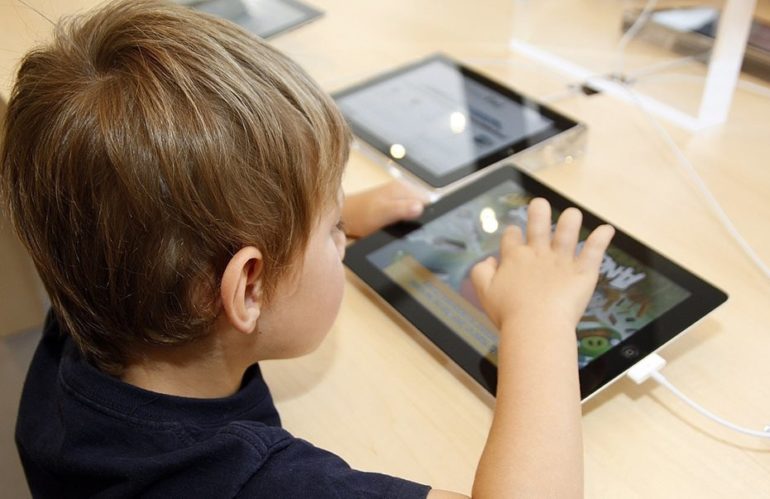The increase in myopia in children may be related to the sharp increase in time spent in front of telephone screens, tablets or computers, due to restrictive measures that prevent children from being outdoors due to the pandemic.
A study from Hong Kong was published after evaluation in the British Journal of Ophthalmology.
By September 2020, more than 180 countries had closed schools and colleges, affecting one billion students, or 80% of the world's students, in an effort to control the coronavirus, researchers say.
Children were particularly affected, as outdoor activities were restricted or banned and social transactions were severely curtailed. As for the study area, Hong Kong is one of the most densely populated cities in the world, with most residents living in high-rise and small apartments with little outdoor space.
Increasing the time on the screens and decreasing the time outdoors are involved in myopia, as it is a condition in which the shape of the eye changes, causing the light rays to be refracted in the wrong place, resulting in the focus of the images. in front of the retina, instead of on its surface.
Myopia in children is important because it puts them at risk for complications that increase the risk of irreversible vision loss later in life, researchers say.
To find out if the forced changes in behavior and lifestyle during the pandemic may have affected children's eyesight, the researchers looked at the eyes of 1793 Hong Kong children participating in an ongoing population-based ocular study of ocular diseases in children. aged 6-8 years.
About 709 of the children entered the study at the beginning of the pandemic (December 2019 - January 2020) and were followed for about 8 months. The 1084 children participated in the study before the onset of the pandemic and were followed for about 3 years.
The children's visual acuity - the ability to see clearly - was measured and they completed questionnaires about their lifestyle, indicating at the same time how much time they spent outdoors and reading, when entering the study and during visits to the ophthalmologist.
About 1 in 5 children (19,5%) who entered the study during the pandemic developed myopia between January and August 2020, compared with about 1 in 3 children (37%) who belonged to the study group for three years. .
The researchers took into account the age, sex, length of follow-up period, the presence of myopia in the parents and the time the children spent outdoors and reading, the number of new cases of myopia was higher in the children of the pandemic group.
The estimated incidence of myopia over one year was 28%, 27% and 26%, respectively, for children 6, 7 and 8 years in the pandemic group of children, compared with 17%, 16% and 15%, respectively, for children 6 , 7 and 8 years in the three-year follow-up group.
These changes coincided with a reduction in the time children spent outdoors, from about one hour and 15 minutes to about 24 minutes / day and an increase in screen time from about 2,5 hours / day to about 7 hours / day about.
The researchers also compared the pandemic team with the findings of their previous study, which looked at the development of myopia in children of the same age in Hong Kong.
In the previous study, 13% of children had developed the condition within a year, while 19,5% of children in the pandemic developed myopia in less than eight months. The comparison added to the link between the pandemic and the increased risk of myopia, according to the researchers.
However, this is an observational study, which in principle can not determine the cause, while at the same time a questionnaire survey has been included, with the result that the answers are based on the assessments of those who respond. Researchers point to these limitations of the study, adding that the findings may differ in other areas where public health measures are different.
However, the researchers emphasize that despite the insurmountable limitations of the study, the initial results still show a worrying development of myopia that justifies such therapeutic actions. But they warn ophthalmologists, politicians, educators and parents that a new public health crisis is imminent as a result of the pandemic and that collective efforts are needed to prevent childhood myopia.
Source: Ιn.gr
